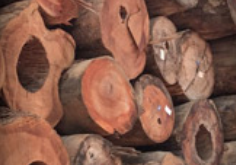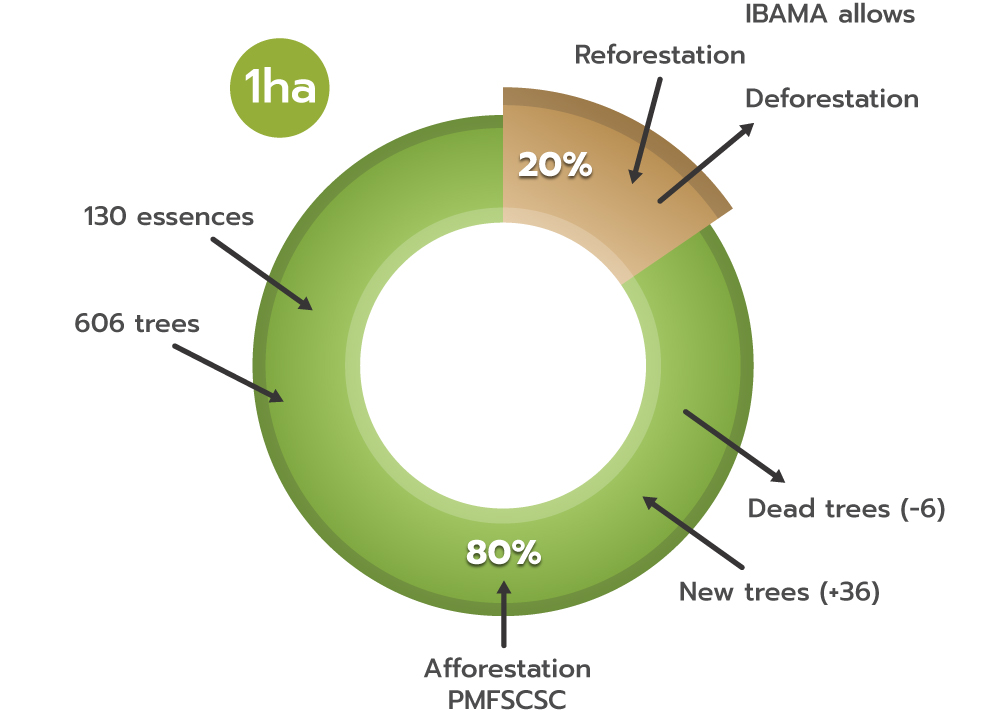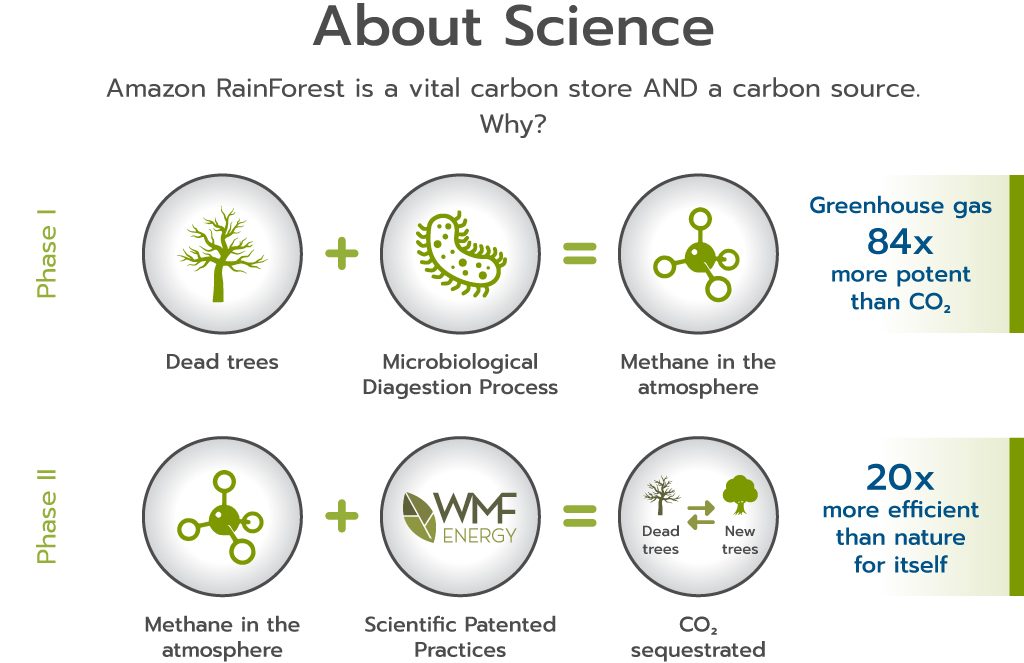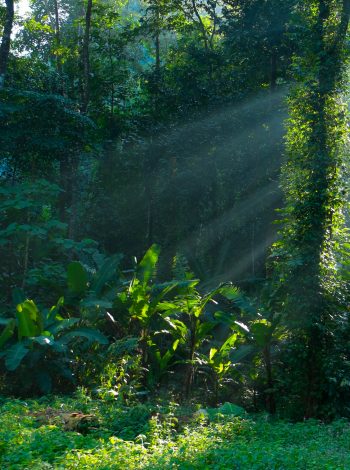While it is commonly known that the Amazon rainforest is a vital carbon store, or “sink”, that slows the pace of global warming, it is less well known that it can also become a source of carbon emitters. This is because dead trees release methane, which are more harmful gases than carbon, back into the atmosphere when they decompose.

Trees decomposing internally
These photos demonstrate the trunks with their cores corroded by the action of microorganisms that prevent the trees from carrying out photosynthesis. During this microbiological digestion process, the tree emits methane gas, a greenhouse gas 84 times more potent than CO2.

Therefore, handling dead trees is another action to protect and promote environmental balance, as this way, we can manage dead trees and plant 5 to 6 in place with the aim of increasing the carbon stock and organizing nature’s ecosystem, reducing methane emissions from the Amazon rainforest.

In addition, by handling decomposing trees, we can take advantage of wood that has a high economic value. Wood products store carbon (50% of dry mass is carbon) and when used in construction as a substitute for energy intensive products such as concrete and steel, they significantly reduce CO2 emissions (the sector accounts for 30% of emissions annual global GHG emissions).
Thus, we created a model that shows that it is possible to generate a highly profitable income in a truly sustainable way, both for the environment and for local communities, maintaining the integrity of the forest, through carbon credits and commercialization of the wood harvested through of the sustainable management plan.



